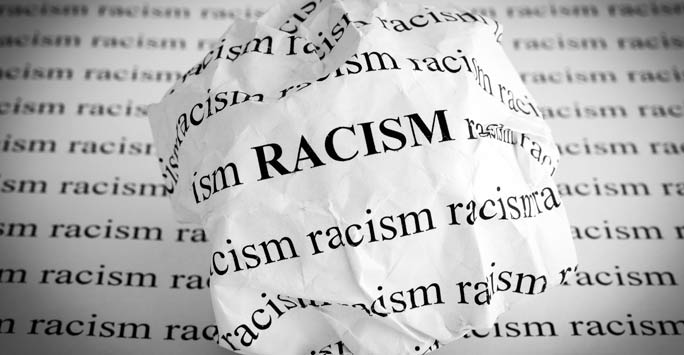Opinion: Why the government's race report is deeply flawed
Posted on: 21 April 2021 by Dr Leona Vaughn in 2021 posts

Dr Leona Vaughn, Derby Fellow in the politics department, gives her view on the government's recent report into race and racism in the UK.
When the United Nations intervene about a report published in a Member State, this indicates just how far out of step with the rest of the world that the claims and findings of that report must be.
This is the case for the Commission on Race and Ethnic Disparity (CRED) report, unequivocally condemned by the United Nations Working Group of Experts on People of African Descent as repackaging ‘racist stereotypes’, ‘twisting data’ and rationalising ‘White supremacy’.
Clearly, this report is problematic on many levels. There is a litany of claims of methodological and ethical discrepancies, including citing work in a way that is misrepresentative or citing consultation with academics that never actually took place.
It makes bizarre assertions about decolonising the curriculum ‘banning’ White authors (CRED, 2021: 9) and dismisses the concept of institutional (and consequently systemic and structural) racism.
However, most problematic is the selective use of data to undermine the lived experiences of Black and other racialised and minoritised people in the UK.
The report talks of ‘explained and unexplained disparity’ to make its claim that the UK is not institutionally racist. This is referred to by Bruce-Jones, as “if racism can’t be proven, it doesn’t exist”.
The unexplained disparities in society found between White people and Black, Asian or minority ethnic people (BAME), are claimed in the report to potentially be due to a number of factors listed, such as geography. But not racism. Which is odd, when the legal definition of indirect (racial) discrimination is that it “happens when there is a policy that applies in the same way for everybody but disadvantages a group of people who share a protected characteristic, and you are disadvantaged as part of this group”.
When statistical information evidences persistent and entrenched disparities to the detriment of Black, Asian and other racialised and minoritised communities, surely, we cannot ignore the cause of those disparities as a form of ‘indirect racial discrimination’ and therefore an indicator of systemic racism?
The analysis within this report is termed by some as incompetence and by others, including the United Nations, as have having a much more insidious agenda.
This report wants to steer us away from the objective reality that as a legacy of our colonial and imperial histories, racism is baked into our structures and institutions and requires action to remove it.
The recommendation to stop using the term ‘BAME’ for example, may seem to be responding to valid concerns that different forms of racism and the individual experiences of specific communities are obscured by its use. However, abandoning BAME altogether is also an abandonment of the analysis of collective experiences of racialised and minoritised groups in the UK. Analysis is required for us to gain a better insight into systemic racism across our society.
I lectured on race and the Criminal Justice System (CJS) this week. The government reports into direct and indirect racial discrimination in the system over the last 40 years are extensive. The Black People, Racism and Human Rights report, released just six months before the CRED, states that 85% of Black people in the UK are not confident that they would be treated the same as a White person by the police. 91% of Black women. 77% of Black men. Surprisingly, just four out of 24 recommendations in the CRED report are made directly to the CJS, and their quality and orientation is questionable.
The CRED report was claimed as a response to the George Floyd protests, but as the Government welcomes the conviction of his killer, we should remind ourselves that systemic racism is not exclusively American, as the figures of CJS ‘disparity’ show:
- Gypsy Roma and Traveller communities are 0.1% of population but 5% of prison population;
- Black people are 3% of population but 8% of deaths in custody;
- ‘BAME’ children are 13% of population but 51% of all children in custody;
- Young Black and Asian men 2x likely to be given a COVID fine.
- Black people are 5.7x more likely to have force used on them by police than White people. 9x more likely to have tasers drawn on them. 9x more likely to be stopped and searched by police (18x more likely under section 60 powers) (NPCC, 2020). 8x more likely to be ‘compliant handcuffed’. Over 3x more likely to have a spit and bite guard used on them.
Alongside the known impacts of the UK’s Hostile Environment, these statistics for our justice system make a compelling case that the ‘institutional’ and systemic racism denied in this report, is alive and well.
Discover more
Learn more about Dr Leona Vaughn's research and follow her on Twitter.
Find out more about politics at Liverpool.
Keywords: University of Liverpool, Politics, Research, Opinion, Liverpool, Black Lives Matter, Racism, Expert.